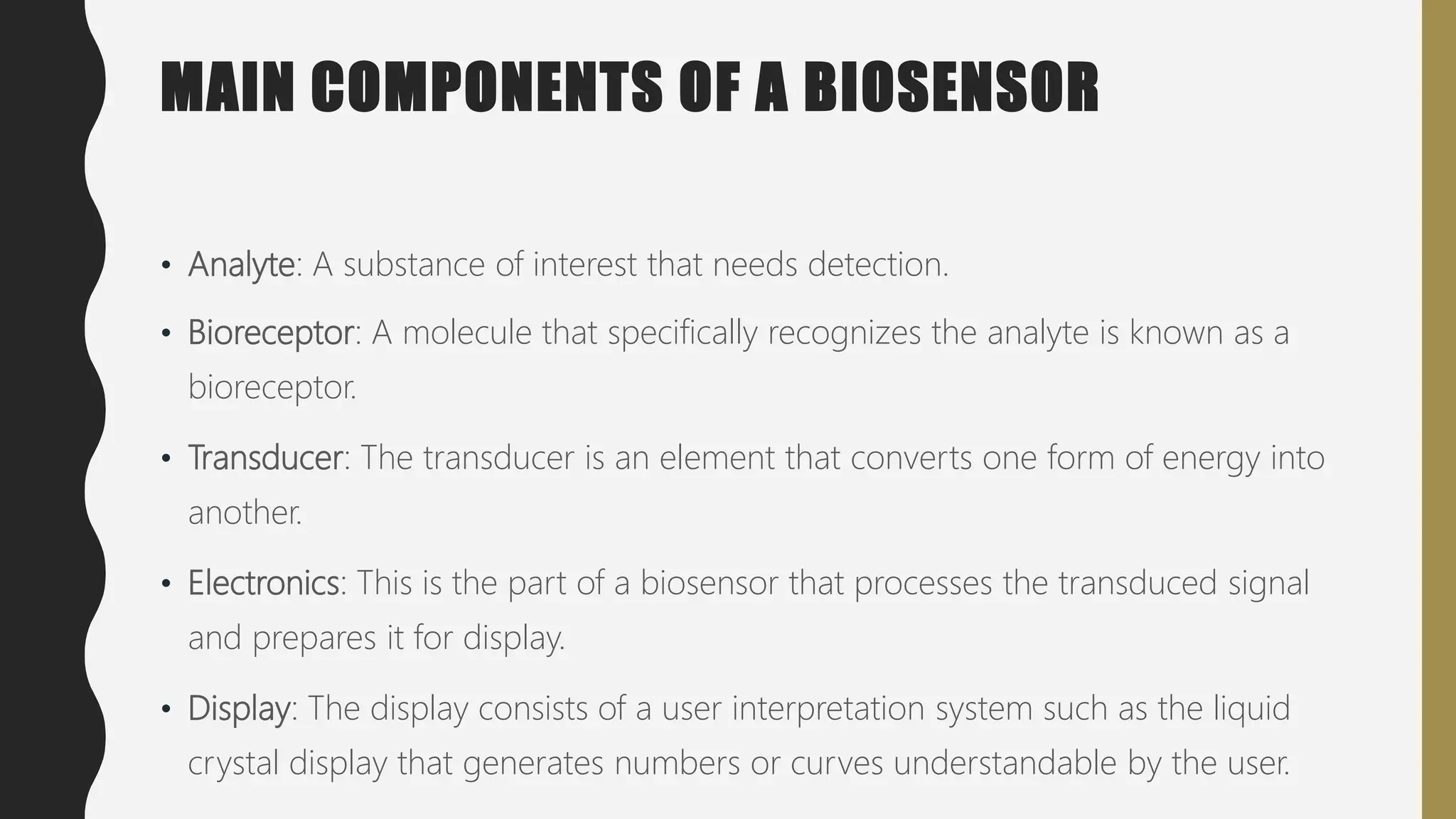A biosensor is a device that combines a biological component, like enzymes or antibodies, with a transducer to detect specific analytes and convert the resulting signal into a readable format. Key aspects of biosensors include selectivity, reproducibility, stability, and sensitivity, with types ranging from electrochemical to optical sensors. The document elaborates on glucose sensors, their working principles, evolutionary generations, and applications in monitoring blood glucose for diabetes management.





















